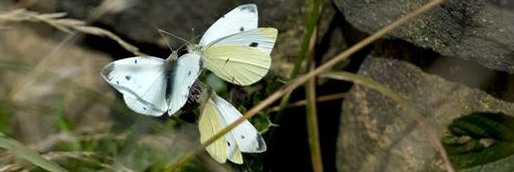

Biodiversity
Action
Plan

Butterfly species. Green Hairstreak on moorland bilberry, Wall Brown patrolling grass-verged upland lanes, Speckled Wood in grassy glades, Meadow Brown in farmland, or Peacock, Red Admiral and Small Tortoiseshell in our gardens; butterflies are a delight to see.
They can be found basking on leaves, walls and bare ground and visiting flowers for nectar; butterflies are useful pollinators and an important indicator of a healthy natural environment and biodiversity.
Butterfly species breeding in Barnsley
Blues
Common Blue
Holly Blue
Small Blue
Brown Argus
Browns
Gatekeeper
Meadow Brown
Small Heath
Speckled wood
Ringlet
Wall
Hairstreaks & Coppers
Green Hairstreak,
Purple Hairstreak
White-letter Hairstreak
Small Copper
Skippers
Dingy Skipper
Essex Skipper (recent)
Small Skipper
Large Skipper
Whites and yellows
Large White
Small White
Green-veined White
Orange Tip
Brimstone
Other
Comma
Peacock
Red Admiral (resident)
Small Tortoiseshell
Italics = priority species
Some butterfly species such as Comma, Gatekeeper, Ringlet and Speckled Wood have expanded northwards into Barnsley since the 1980s. A list of butterfly species recorded as resident and breeding in Barnsley is given on the right.
However many butterfly species have declined in numbers and are under threat. It’s important to have habitats that support butterfly species.
Sites where there is an assemblage of 10 or more butterfly species including ones considered of least concern nationally are a local conservation priority.
The UKBAP, Section 41 and red-listed Dingy Skipper, Small Heath, Wall Brown, White-letter Hairstreak and now Small Blue are all found in Barnsley. For further details on these local priority species follow the links below.
Generally, butterflies are threatened by a variety of sources. These include intensive farming, land development, fires and floods, habitat isolation, pollution, and climate change. Nitrogen pollution is increasingly an issue.
However there is evidence that climate change is helping some species arrive naturally in Barnsley. These should be included in the local list as they become established.
Conservation. Many butterfly species are ‘generalists’ but others need specific habitat features, including the plants that their larvae (caterpillars) feed on, the flowers adults prefer for nectar, and the conditions needed for shelter and over-wintering. Recording and monitoring butterfly species populations is important.
Further information can be found via these links:
In addition…
Migrants
Painted Lady
Clouded Yellow
Vagrant/wanderer
Marbled White
Silver-Washed Fritillary
Dark Green Fritillary
Links:
Butterfly Conservation:Link
UK Butterflies: Link
BugLife Link

Butterfly Species